Our panel consists of a number of individuals from organisations of various sizes. They identified a number of steps building services in particular could take as a sector within construction to improve the way we work. It's a more user-friendly approach, and resulted in the list you see here. The discussions also identified the many challenges that building services faces, but there was a great deal of agreement on these – which is a significant step forward.
The first concern is related to people, or lack of them coming into the construction industry at all levels. It's not just consultants and contractors who suffer, manufacturers also feel the lack of qualified staff. Steven Rees, marketing manager of Mitsubishi Electric UK says: " We have a peak installation season which means there's an annual problem with shortage of staff. Clients are told by manufacturers that there isn't the stock, but in reality there are no people to install the products."
There are training programmes going on, but they are run by individual organisations for their own needs. This is an expensive process, and often there are no guarantees: "If we do find a decent potential engineer, we have to train him which takes time and money. But as soon as they have their certificate they can be poached easily."
The other issue for the industry is that construction in general doesn't have a culture of training. It is regarded as a straightforward cost, rather than an investment. Chris Monson of controls specialist Trend says that there should be a requirement for proper training before anyone works on a site: "I'm not sure where the responsibility finally lies, but as an industry we don't ensure that people working on our sites are properly trained and up to date. They may have attended a course, but they didn't pass a test. The idea that site staff have to be trained, effective and efficient isn't ever really written into the requirements. Perhaps this is something we should do."
The high price of training
Chris Twinn of Arup agrees, but returns again to the issue of cost: "More and more as consultants, we are told to lay off that kind of specification. We are told that by writing in that kind of requirement we restrict ourselves to using contractors with higher overheads and therefore tender prices are higher. The advice we get from the cost side is 'stick to the technical performance of your systems, and lay off the preliminaries'. So there is no requirement for individuals on site to have certifiable technical abilities."
Rees points out that Mitsubishi has reinforced the need for training for its installers by linking it to product warranties. "We train all our engineers and they either pass or fail. If a failed engineer's name is on a product log book, then the warranty will be invalid. We make the engineers pay for the training, but on the day they get and a service tool which helps them interrogate the systems quicker." Rees says that this kind of incentive works well, but that it is a financial investment for his company.
The HVCA, celebrating its centenary year in 2004, has looked into encouraging training and dealing with the costs of this. The Association has been considering the practicalities of a national training levy. Peter Rimmer head of the HVCA's employment affairs department says: "This would mean everybody is paying into the kitty, and therefore can expect so much out of it to sustain training. I'm not saying that there is no training going on now, but it isn't at the right level in terms of numbers that the industry would prefer to see. Also, there isn't an industry-recognised training framework which encourages contractors to undertake training in the sort of numbers we really need."
Getting numbers of new people into construction and engineering goes to the heart of problem: "People aren't even coming into our industry. We don't have the choice of students coming out of schools like some other professions," says Twinn.
The panel agrees that this is a key problem to solve; and that the priority should be to improve the status of engineering, and people's perception of construction. Bulen Hourshid, head of technical engineering with engineering services cost consultancy Mott Green Wall, says: "The credibility of engineers in Europe is much higher than in the UK. No disrespect to the bloke with the spanner, but that's how people here see 'engineers' – the bloke who does the plumbing. But that's not the whole story. You don't realise how much there is to engineering until you're already at University."
Andrew Swain-Smith of BDP says that even though this is the case outside the sector, once people are engineers, they seem determined to stick with that title: "We had a debate recently at BDP as to what we as engineers should call ourselves. There was a huge reluctance to loose the word engineer. It's what we are! Engineering may not be understood, but engineers don't want to change their name. Our issue is the perception of those outside the industry."
Get them young
The panel agreed that winning the hearts and minds of young people while they're still at school is key. This does present something of a challenge, particular on the contractor side: "Our members find it hard to get their organisations into schools," says Peter Rimmer. "That may be because we are not associated with the 'clean' end of engineering, more the hands-on side of the industry. There are also problems taking young people on site. Regulations are very stringent now. It all conspires to make members think twice about undertaking training at that level." However, Rimmer says that next year the HVCA is having a 'blitz' on getting work experience for young people, and will be organising visits to sites with Association members.
Work by CIBSE Patrons was also praised. Chris Monson comments: "CIBSE Patrons run the Imagineering stand at exhibitions, and also packages for schools. It has been left to patrons though, rather than being pushed out to wider membership. We should do more to support them."
It was also suggested that bodies such as the Institution of Mechanical Engineers and Institution of Electrical Engineers should take a more coordinated approach to winning over school-aged pupils. Chris Twinn suggests that perhaps engineers could be encouraged to do more to promote the career in schools: "Maybe in the latter stages of training to become a chartered engineer it should be a requirement that you have to go into schools and talk about the industry and your work. This is a point in your career when you have time to do this. It would also help improve communication skills for engineers."
The combination of a shortage of engineering graduates, and changing roles for engineers has lead to many consultancies taking on non-engineering graduates and training them in services specialisms. Andrew Swain-Smith says that as an industry we should also consider employing those who are good communicators, in order to ensure that clients get a better impression of what consultants have to offer, and to better convey the importance of what they do. This includes employing greater numbers of women in the industry.
People issues impact heavily on other aspects of the industry, and are therefore seen as fundamental problems, which if solved could have a positive effect on other areas such as quality of work, the status of the industry, profitability.
Another key point raised was the changing pattern of work in building services. Jobs which were once seen as the sole preserve of services engineers are now done elsewhere in the supply chain; and services consultants are taking on new tasks. Chris Monson says: "This is true even from an installers point of view. In the controls industry, the scope of what is included in a controls package can now include the IT wiring, and more. So much is falling into our remit. It's not necessarily a bad thing, because you can acquire new skills. You have to take it, otherwise you may not get the work."
Engineers are picking up 'extra' work because of their particular skills. This includes calculations such as U values, or taking responsibility for Part L compliance. There are two views on how consultancies can capitalise on this evolution. Chris Twinn suggests that it would be better to enumerate exactly what is standard, and to list the 'extras' such as Part L compliance or energy targeting and to charge clients separately for these.
But Swain-Smith says: "I think listing the 'extras' is the wrong way to go, because you are narrowing the profession, when we want to broaden it. We already do more than we used to, so these extras should come within our normal service. People want to know that when they come to us, they are getting everything they need to produce the building they want."
Twinn argues: "Tactically, if we are going to get the remuneration we need to get people into the industry and train them, we need to convey to clients that these are extra tasks and that they should be paid for."
Andy Ford of Fulcrum Consulting points out however, that while we deal with the new jobs, it is vital not to loose basic skills: "Consulting engineers are transferring responsibility down the line for doing detailed drawings, and diluting our skills that way. They still need doing! Some contractors can do them, but certainly not all. We need to give just as high priority to these things."
The task of allocating responsibilities is becoming more important as the traditional lines of demarcation are blurred. Ford recommends the BSRIA Responsibilities Matrix as a good tool to use when starting a project. "The Matrix is a good idea and could do with being extended. If you use that, nobody says 'I thought someone else was doing this'. The tasks end up being done by the people who can do them best."
Whatever approach is taken, everyone agrees that raising fees is an important goal. This relates to the problem of image that building services seems to face: "Services are seen as a necessary evil," says Hourshid. "Clients think 'I don't really want it, but I've got to have it'. Everything else you can 'sell' to clients, because you can see it, but not services." As Chris Monson says: "ÐÇ¿Õ´«Ã½ services is a grudge purchase!"
Specify closer
As a result, the power of specifying products is slipping out of the hands of services consultants, leading to a cost-led, risk-free culture. As Andy Ford says: "Our role of naming and nominating has gone, but procurement risk management must change to allow its equivalent to return."
Steven Rees believes that the problem of lowest cost based specifying springs from very poor briefs: "Some of the specs we see are as vague as 'it shall be air conditioned'. It is really easy to move away from these kind of specs to cost-lead. That's the kind of thing we have to stop. It sets the target too low."
Chris Twinn adds: "It used to be about specifying kit. The majority of specs now go out with very little of that because the clients' financial advisers say 'if you want the keenest price, this is what you do – take all that out'."
On the other side of the argument, engineers feel they could help the situation. Swain-Smith says: "We should make more efforts to understand costing. I worked in other parts of Europe where engineers think we are mad because we don't know the cost of what we are designing."
A problem which links with selecting products is the proliferation of kit available to today's engineer, and the huge amounts of manufacturers' information which have to be dealt with. Swain-Smith says: "Manufacturers are producing so many products and variations that I almost can't keep up with it. It is also difficult to keep an audit trail of where information has come from. You can't look back and find out why you ended up where you did with a design."
Bulen Hourshid agrees, and says that the problem is largely UK based: "I did a job in Germany and we had nine different sizes of fan coil unit, that was it. We then worked on a similar project in London and the consultant had 13 sizes of fan coil unit."
Twinn says that the problem is compounded by calculations for energy efficiency under Part L. "If you take watts per litre of air supplied, if you standardise on a larger fan coil unit it's true that you can turn it down. But your total installed capacity is what's used to calculate for ÐÇ¿Õ´«Ã½ Regulations and all of a sudden you find that you're over the energy consumption allowed for that building because you're oversizing." Thus engineers are forced to size very closely, resulting in use of a variety of kit.
Robert Duczenko of fan specialist Nuaire says that he too would like to see the number of products used on one project reduced. .
"We have at least 100 000 fans, which doesn't take into account axials which raises the number closer to half a million!" says Duczenko. "Our overhead costs are large because of that. First of all we have to run a database which needs an IT department to maintain that. Plus there are the training needs of the people who use the database.
"If we could take out all these and associated costs, we could reduce the cost of our products. Our financial director says it would be easier if we could just have a small, medium and large fan!" The consultants agree that a smaller range of products would also make their lives easier – as long as the ability to adapt if necessary was still there.
There are many areas where building services could improve. What is interesting however is that the solutions are all bound together, and have a knock-on effect: raise the status of engineering as an industry by demonstrating confidence dealing with new areas such as Part L compliance, energy measurement and sustainability; attract more and better quality people into the industry who are good communicators; use the money from higher fees (gained from our new role as consultant designers) to train them well – at all levels; and help manufacturers save costs by being more aware of their needs for clear specification and standardisation on projects.
Action points
- We need to improve our status as an industry.
- The scope of what we offer is growing, but our fees aren’t. This needs to be addressed either by highlighting the tasks that engineers will now carry out, and charging for these; or simply doing everything that we can, and charging a higher overall fee.
- Work which traditionally belonged to the services engineer is moving to other parts of the supply chain. The BSRIA Responsibilities Matrix could be used to clarify who in the construction team is responsible for what. The Matrix should be updated.
- Give more backing to efforts of groups such as the CIBSE patrons to interest schoolchildren in engineering. Work with IMechE and IEE to promote engineering as a career.
- Encourage new engineers to go back into schools to talk about engineering, by making this part of the process of becoming chartered.
- Create apprenticeships for the ‘craft’ level of the industry.
- Create a statutory training levy. Companies would pay according to their means, and all would benefit.
- Encourage better training throughout careers – at ALL levels of the industry.
- Make clear specifications and stick to them. This means standing by our designs.
- There needs to be greater understanding of the concept of whole life costing, and wider use. Educate clients as to what exactly they are buying when they pay for building services. This is where teamworking and partnering can help get buy-in from the whole team.
- Services engineers should take responsibility for keeping clients informed about legislation such as Part L.
- Services engineers need to have a better grasp of costs. New generations of engineers seems to have let this knowledge slip.
- There should be more emphasis on getting services engineers onto site , so that they can see the reality of what happens to their designs.
- Engineers are bombarded with information on design, products, legislation. It is difficult to keep audit trails of knowledge, especially given use of the internet. We need to manage knowledge better. Co-operation from manufacturers might help reduce the amount of information, but in turn engineers need to be clear about what they want.
- Use more standardised products. Many manufacturers make hundreds (even thousands) of versions of one product, leading to increased costs for all. Narrowing choices enables suppliers to lower costs, makes installation easier and quicker, cuts the cost to the client. It also helps with the previous point about too much information.
- Make sustainability easy for clients to understand. The concept of building labelling is regarded as a good way to do this. It would be beneficial for services equipment to be labelled too, on a sliding scale of energy efficiency (similar to consumer goods such as fridges, washing machines etc). This is a small step on from the ECA list, which has no scale and only includes new, innovative technologies rather than extant products.
- Train engineers to be better communicators. Courses should include opportunities for engineers to present designs to architects who could critique their work. But there is also an urgent need for engineering to attract better natural communicators. Which leads to the next point:
- Attract more women to the industry.
- Please let’s stop comparing ourselves to the motor industry!
The panel
Chris Twinn, ArupAndy Ford, Fulcrum
Andy Swain-Smith, BDP
Steven Rees, Mitsubishi
Robert Duczenko, Nuaire
Chris Monson, Trend
Bulen Hourshid, Mott Green Wall
Peter Rimmer, HVCA
Tony Matthews, Constructing Excellence
Source
ÐÇ¿Õ´«Ã½ Sustainable Design
Postscript
BSj will be discussing these points further depth in a round table event later this year. We would like to thank all the participants in this event for their contribution.

















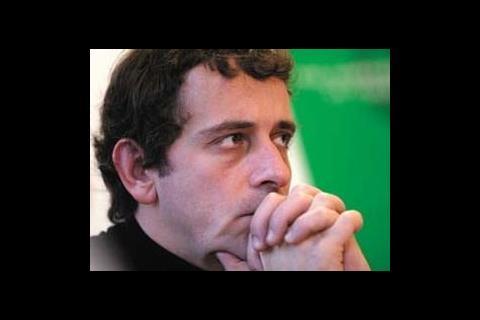

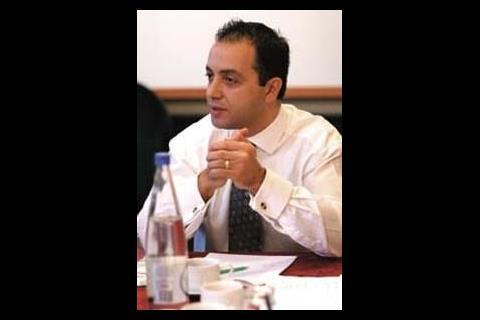
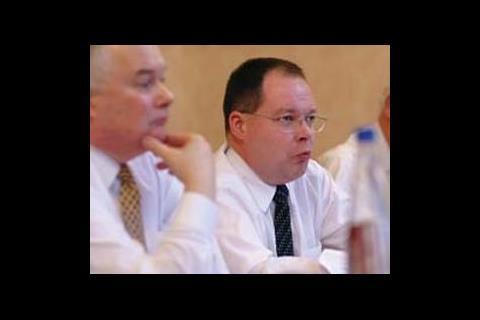
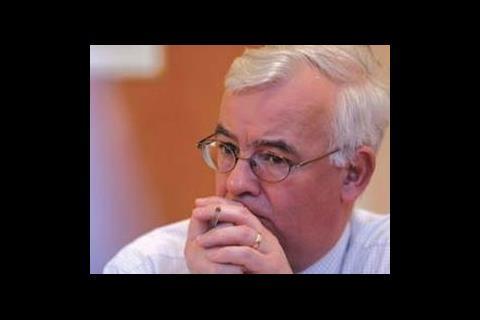
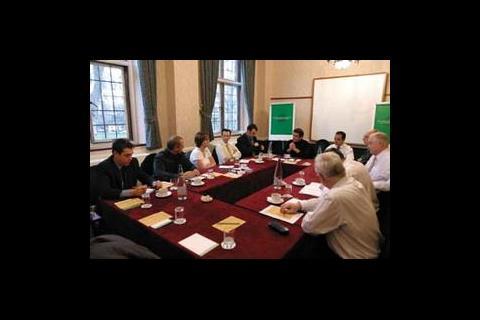

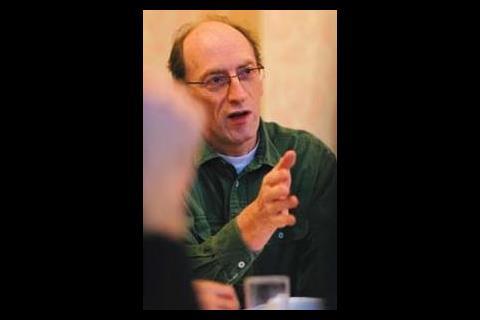
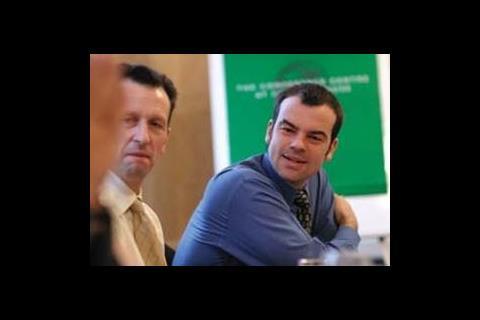
No comments yet